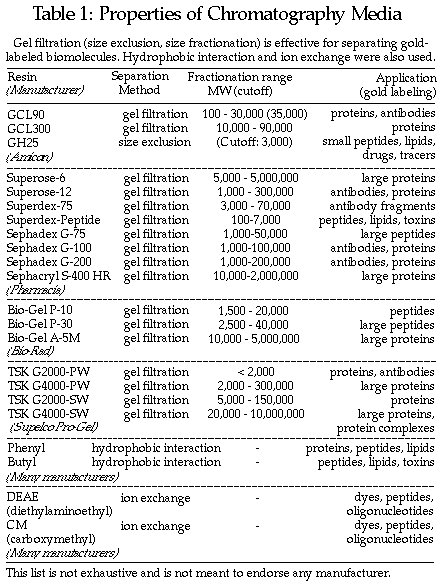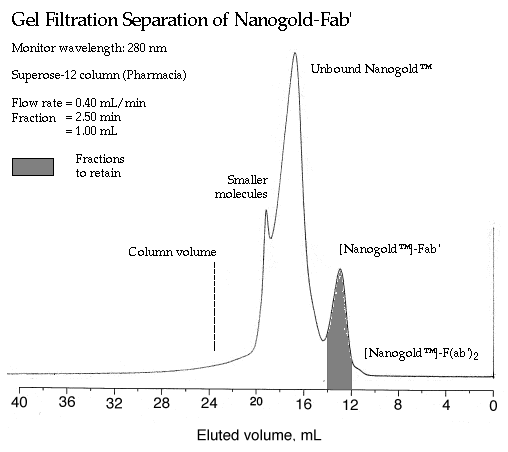Labeling with Gold Nanoparticles:
Separating and Isolating Gold Nanoparticle Conjugates
Gel filtration is the best method for separating gold nanoparticle-labeled conjugates.
Dialysis gives much more variable results; in our laboratories, attempts to separate unbound gold nanoparticles from protein and antibodyconjugates by dialysis resulted in degradation of the gold, and sometimes a large loss of protein; therefore, we cannot recommend dialysis for isolating conjugates.
Membrane centrifugation maybe useful, especially for in the labeling of very large proteins; a microconcentrator with a MW cut-off of 50,000 or 100,000 will allow both undecagold and Nanogold® to pass through the membrane.
Choosing your gel filtration media

Select a gel which gives the best possible separation between the gold conjugate and the component which is present in excess: this will be a gel where the MW of the conjugate is towards the top of the MW fractionation range, and the excess reagent (either the gold nanoparticle or unlabeled smaller molecule) is towards the bottom of the range. Note: If you are concerned about the possibility of aggregates, select a gel where the upper limit of the MW range is sustantially higher than the MW of the gold nanoparticle conjugate.
An example of the separation of a Nanogold®-labeled Fab' fragment is shown below:

The desired product (shaded in grey) is separated both from larger F(ab')2 conjugates and from excess unbound Nanogold®. For even higher purity, fractions 12-14 should be combined and separated again.
To stain your gel or blot for clear, rapid results to the naked eye:
|